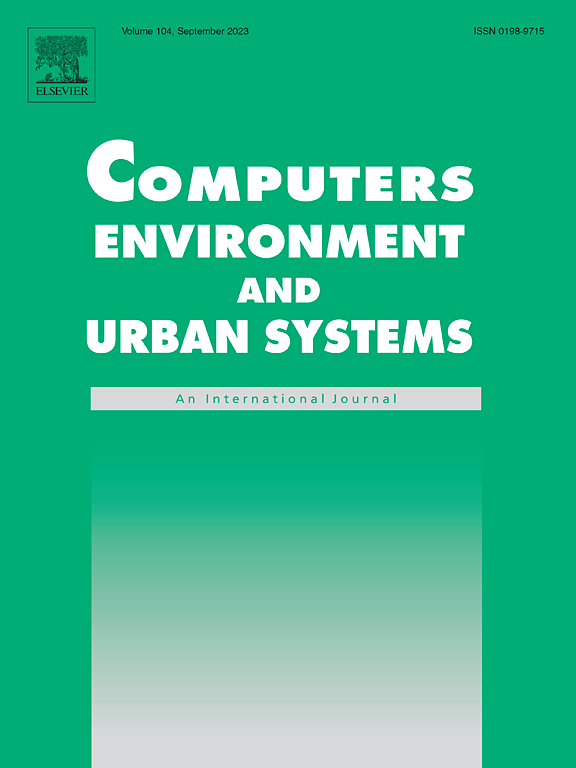An agent-based model for estimating daily face-to-face contact networks in large urban systems
IF 8.3
1区 地球科学
Q1 ENVIRONMENTAL STUDIES
Computers Environment and Urban Systems
Pub Date : 2025-07-17
DOI:10.1016/j.compenvurbsys.2025.102321
引用次数: 0
Abstract
Detailed contact data is important to model disease transmission in dense urban areas, as human mobility and social interactions significantly impact spread. However, linking mobility, activities, and social contacts in large cities is challenging. Current models often rely on contact surveys and overlook travel behaviors. Here we present a novel modeling framework for estimating large-scale, multi-setting contact networks by leveraging high-resolution synthetic activity-travel data. Our approach introduces a new mathematical formalism to construct multi-setting contact networks from spatiotemporal co-location patterns, enabling constraints based on key statistics (e.g., contact rates per setting, proportions of each contact type), incorporation of location types, and individual activity purposes. Efficient algorithms extract co-presence events, generating validated, individual-based contact networks, from which age-specific contact matrices are derived. The approach is tested using EQASIM, an open and reproducible activity-based travel demand model that relies on publicly available data for France’s Île-de-France region. We also evaluated the spatial effects of work-from-home policies on contact patterns by modifying individuals’ activity-travel diaries. Results show that multi-setting contact networks — representing 12 million individuals distributed across 1,714,920 unique locations — can be generated in minutes while accurately reproducing setting- and age-specific spatial contact patterns.
基于智能体的大型城市系统日常面对面接触网络估计模型
详细的接触数据对于在人口密集的城市地区建立疾病传播模型非常重要,因为人类的流动性和社会互动会对传播产生重大影响。然而,将大城市的流动性、活动和社会联系联系起来是一项挑战。目前的模型往往依赖于接触调查,而忽略了旅行行为。在这里,我们提出了一个新的建模框架,通过利用高分辨率的综合活动-旅行数据来估计大规模的、多设置的接触网络。我们的方法引入了一种新的数学形式,从时空共定位模式构建多设置接触网络,实现基于关键统计数据(例如,每个设置的接触率,每种接触类型的比例)的约束,结合位置类型和个人活动目的。有效的算法提取共同存在事件,生成经过验证的、基于个体的接触网络,并从中派生出特定年龄的接触矩阵。该方法使用EQASIM进行了测试,EQASIM是一个开放的、可重复的基于活动的旅行需求模型,它依赖于法国Île-de-France地区的公开数据。我们还通过修改个人的活动-旅行日记来评估在家工作政策对接触模式的空间效应。结果表明,在几分钟内就可以生成分布在1,714,920个不同地点的1200万人的多环境接触网络,同时准确地再现了特定环境和年龄的空间接触模式。
本文章由计算机程序翻译,如有差异,请以英文原文为准。
求助全文
约1分钟内获得全文
求助全文
来源期刊

Computers Environment and Urban Systems
Multiple-
CiteScore
13.30
自引率
7.40%
发文量
111
审稿时长
32 days
期刊介绍:
Computers, Environment and Urban Systemsis an interdisciplinary journal publishing cutting-edge and innovative computer-based research on environmental and urban systems, that privileges the geospatial perspective. The journal welcomes original high quality scholarship of a theoretical, applied or technological nature, and provides a stimulating presentation of perspectives, research developments, overviews of important new technologies and uses of major computational, information-based, and visualization innovations. Applied and theoretical contributions demonstrate the scope of computer-based analysis fostering a better understanding of environmental and urban systems, their spatial scope and their dynamics.
 求助内容:
求助内容: 应助结果提醒方式:
应助结果提醒方式:


